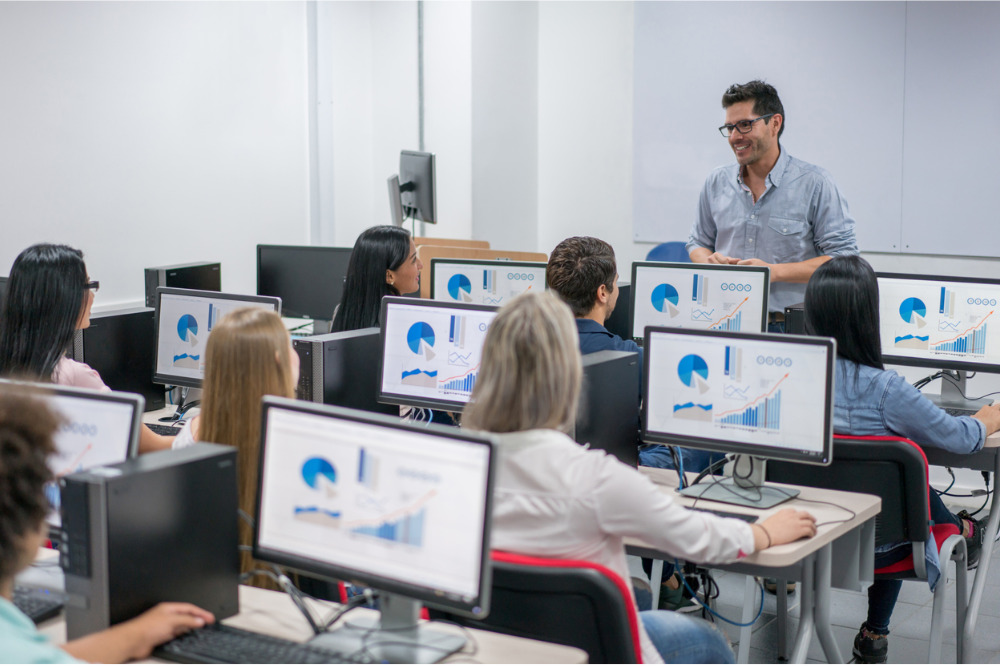
Poorer school children like video games more and believe they have better digital skills than their socioeconomically advantaged peers, new research shows.
The study, by the Australian Catholic University’s Institute for Learning Sciences and Teacher Education, focused on the impact of SES, self-identified sex, and self-reported self-efficacy – or a “triad of influences” – to determine their impact on students’ self-perceptions about digital technologies and gaming.
After observing 613 students aged 7 to 10, the researchers also found girls were particularly less likely to enjoy video games and digital activities as their socioeconomic status (SES) increased.
The Video Gaming and Digital Competence Among Elementary School Students study showed lower SES students thought their digital skills were better than those in the middle and upper SES categories, revealing self-rated digital skills decreased as SES levels increased.
Boys also rated their digital skills more highly than girls in each SES category in the study, which involved students from 21 Government and Independent Australian primary schools and was published in the journal Learning, Media and Technology.
The team of researchers, led by Associate Professor Scholes, were surprised by the findings that lower SES students enjoyed gaming and technology more than those from higher SES categories and that self-rated digital skills decreased as SES increased.
Lower-SES students rated their digital skills, including internet and social media usage and playing games, higher than those reported by students in middle and upper SES categories.
“We had hypothesised that higher SES students would have greater access to technology and would therefore indicate higher levels of enjoyment for digital technology and gaming and report higher levels of confidence in their digital skills than those in lower SES categories,” Associate Professor Scholes said.
“To find an opposite trend is worthy of further investigation to determine why enjoyment of digital technology and gaming as well as confidence in digital skills was not positively related to SES as we had expected.”
Associate Professor Scholes said gaming pedagogies such as game design, programming and coding should be used in classrooms to support learning and boost self-efficacy when it comes to digital technologies – particularly among girls.
“Understanding the impact of these influences is key to helping educators to support students with diverse digital competence and engagement,” she said.
“This study shows gender norms around engagement and self-efficacy are formed as early as 7 years of age, so if we want to promote girls’ involvement in digital technologies and gaming where females are often underrepresented, we must do more to remove these barriers from an early age.”
Associate Professor Scholes said the research showed gains could be made by differentiating educational interventions around digital technologies.
“Educators may need to scaffold some students, particularly higher SES girls who have less interest and lower self-efficacy in digital spaces, whereas lower SES boys’ higher levels of interest and self-efficacy in digital spaces could be used to engage with digital pedagogies and advance learning across the curriculum.”
How principals can tackle the digital divide
Speaking to The Educator, Associate Professor Scholes said principals are in “an ideal position” in 2023 to address the digital divide for students in their school and promote pedagogic transformations.
“First, there is a need for Principals to evaluate the present digital divide in the school to appropriately target resources,” Associate Professor Scholes told The Educator.
“Gender-norms and self-efficacy toward digital technologies are formed as early as 7 years of age so the evaluation needs to include students in the early primary years.”
Secondly, says Associate Professor Scholes, normalising gaming pedagogies in primary schools is an ideal way to advance technological skills and dispositions.
“Embedding gaming pedagogies in English can provide opportunities for advancing students digital multimodal literacies that have application to contemporary text processing in English [e.g. websites, multimedia, video game texts, fiction and non-fiction eBooks],” she said.
“Third, providing professional learning for teachers and related resources to embed gaming pedagogies in their curriculum is critical.”


